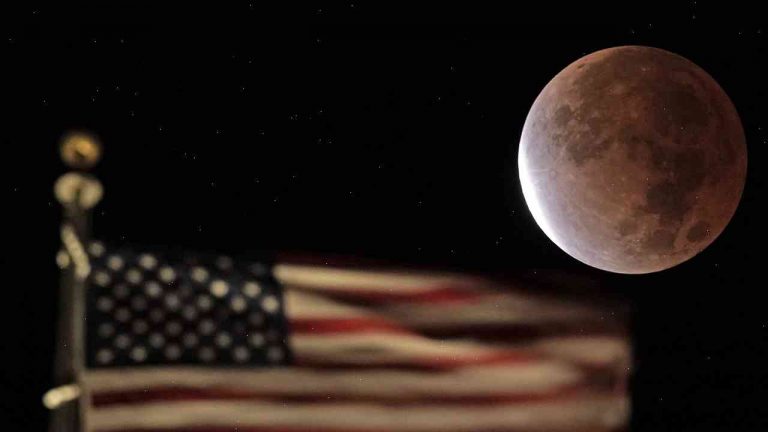Skywatchers in North America, Europe and Asia were treated to a rare celestial treat early on Thursday morning.
While the full lunar eclipse took place during the early hours of the morning, observers in the US, Canada and Europe saw the blood moon over land rather than floating in space.
It was a very rare event – the last was in 1994.
Here are some of the best photos of the event.
Dating back to 1833, residents in the Middle East, India, Pakistan, parts of Asia and Africa have been celebrating the “full moon in the Arabic calendar” since 1970. In 1986, it became an official observance.
According to some accounts, the full lunar eclipse was most famed by Arabs because of the moon’s fiery red hue. The moon will gradually turn red during the total eclipse, which lasted around an hour.
Some cultures see lunar eclipses as prophecies from the Old Testament. In Genesis 3:17-18, it reads: “And it came to pass that when the sun and the moon were darkened, and the earth was filled with blood, and the Lamb cast out the demons, saith the Lord, ‘I will give you a new moon, and your star shall rise again.’”
What colour will the moon during this eclipse? This graph from the University of Michigan allows you to play with different colors of brown to see how much yellow or orange the moon is. It’s very interesting but also interesting because the exact color of the moon is not set in stone.
This time last year, a total lunar eclipse caused an iconic image of the moon to go viral on social media. It was taken by a Chile-based photographer who had never witnessed a total lunar eclipse before, only a partial eclipse. The photo was shared more than 20,000 times.
Crop circles of the world – in pictures Read more
Toward the end of the eclipse, the phenomenon known as the “blood moon” – which has been coined after the red color of blood that stains the moon and is derived from sunlight scattering off tiny droplets of water – occurred. The last time a lunar eclipse was viewed from the UK was in 1946. The UK did not see a total lunar eclipse until 1994.
For those of you who were missing your usual cup of tea, you may have seen “the cosmic high five”. The image shows a “coronation vision” in the sky at a lunar eclipse. During the blood moon – when the moon turns red – it isn’t actually in a certain place, but you can tell people to look towards the centre of the sun since the lunar eclipses are very big for this position.
